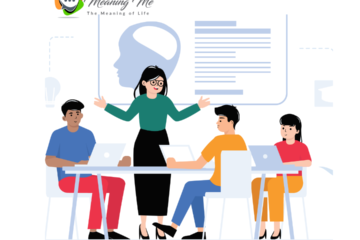Introduction
E-learning has revolutionized education, offering flexibility and accessibility for learners worldwide. However, a significant challenge remains: keeping learners engaged with often dry and static course material. This is where gamification steps in, transforming the e-learning landscape by incorporating game-like elements to make learning fun, interactive, and ultimately more effective.
Gamification in e-learning doesn’t involve turning every course into an elaborate video game. Instead, it’s about strategically applying game design principles to enhance the learning experience. These principles tap into our natural human desire for challenge, competition, achievement, and reward. By integrating elements like points, badges, leaderboards, and progress bars, e-learning platforms can create a sense of fun and accomplishment that motivates learners to actively participate in the learning process.
Imagine an e-learning module on customer service skills. Instead of simply reading text and taking quizzes, learners could be presented with interactive scenarios where they role-play customer interactions. Earning points for successfully resolving issues and achieving badges for exceeding customer expectations gamifies the learning experience. Leaderboards showing top performers can introduce a healthy dose of competition, further motivating learners to hone their skills.
The benefits of gamification in e-learning are multifaceted. First and foremost, it boosts engagement. Learners are more likely to be drawn in by interactive elements and a sense of accomplishment, leading to increased participation and completion rates. Gamification also promotes active learning. By transforming passive content consumption into an interactive experience, learners retain information more effectively. Furthermore, gamification can cater to diverse learning styles. Some learners thrive on competition, while others may be motivated by collecting badges or progressing through levels. By incorporating a variety of game mechanics, e-learning platforms can cater to these individual preferences.
However, it’s crucial to remember that gamification is not a magic bullet. The key lies in using game elements thoughtfully and strategically, ensuring they align with the learning objectives and content. Poorly implemented gamification can feel gimmicky and distract from the actual learning process. When done well, though, gamification can transform e-learning into an engaging and effective journey that equips learners with valuable knowledge and skills.
Gamification in E-Learning: Engaging Learners Through Play”
1. Promotes Active Participation: Play-based learning encourages active engagement, allowing learners to interact with concepts and materials in a hands-on manner. This active participation fosters a deeper understanding and retention of knowledge.

2. Fosters Creativity and Innovation: Play provides a fertile ground for creativity to flourish. By engaging in imaginative play and exploration, learners are encouraged to think outside the box, experiment with ideas, and develop innovative solutions to problems.
3. Critical Thinking Skills: Play-based activities often present learners with challenges and puzzles to solve. This prompts them to think critically, analyze situations, and apply problem-solving strategies—a skill set that is invaluable in both academic and real-world contexts.
4. Supports Social and Emotional Development: Through play, learners have opportunities to collaborate, communicate, and negotiate with peers. This social interaction not only builds important interpersonal skills but also fosters empathy, resilience, and self-confidence.
5. Tailored to Individual Learning Styles: Play-based learning can be adapted to accommodate diverse learning styles and preferences. Whether visual, auditory, kinesthetic, or tactile, learners can engage with content in ways that resonate with their unique strengths and preferences.
6. Creates Positive Learning Experiences: Play injects an element of fun and enjoyment into the learning process, making it more engaging and memorable. Learners are more likely to remain motivated and enthusiastic when learning feels like play rather than a chore.
7. Encourages Exploration and Curiosity: Play encourages learners to explore new ideas, concepts, and interests in a safe and supportive environment. This fosters a sense of curiosity and wonder, driving intrinsic motivation and a lifelong love of learning.
8. Promotes Transferable Skills: The skills developed through play, such as teamwork, communication, and problem-solving, are transferable to various academic subjects and real-world situations. Thus, play-based learning not only enhances academic achievement but also prepares learners for success in their future endeavors.
By embracing play as a fundamental component of the learning process, educators can unlock the full potential of their learners, nurturing their intellectual, social, and emotional growth in meaningful and transformative ways…
Promotes active promotions: –
Active participation in learning is more than just listening; it’s about engaging students in a dynamic exchange of ideas and experiences. By incorporating interactive methods such as hands-on activities, group discussions, and problem-solving exercises, educators can create an environment where students actively participate in their own learning process. This approach not only enhances comprehension but also fosters critical thinking skills and encourages collaboration among peers. When students are actively engaged, they become more invested in their education, leading to greater retention of knowledge and a deeper understanding of the subject matter. Ultimately, promoting active participation prepares students for success both inside and outside the classroom, equipping them with the skills they need to navigate the complexities of the modern world with confidence and competence.
Fosters Creativity and Innovation:
Fostering creativity and innovation in education is paramount for cultivating future-ready individuals. By embracing a curriculum rich in creative expression and problem-solving, educators empower students to think outside the box and approach challenges with ingenuity. Through project-based learning, brainstorming sessions, and artistic endeavors, students hone their ability to generate original ideas and navigate complexity. Moreover, nurturing creativity in education nurtures skills such as critical thinking, collaboration, and adaptability—qualities vital for success in a rapidly evolving world. By fostering a culture of creativity, educators not only prepare students for diverse career paths but also cultivate a mindset of lifelong learning and innovation, ensuring they are equipped to thrive in the complexities of tomorrow’s society

Critical Thinking skills:
Cultivating critical thinking skills in education is essential for empowering students to analyze, evaluate, and solve complex problems. By incorporating activities such as debates, case studies, and inquiry-based learning, educators encourage students to question assumptions, consider multiple perspectives, and make informed decisions. Through these experiences, students develop the ability to think logically, reason effectively, and communicate persuasively. Moreover, fostering critical thinking skills promotes intellectual curiosity and creativity, as students learn to approach challenges with an open mind and a willingness to explore new ideas. By prioritizing critical thinking in education, educators not only prepare students for academic success but also equip them with the essential skills needed to navigate an increasingly complex and interconnected world.
Supports Social and Emotional development:
By supporting social and emotional development in the learning environment, educators foster empathy, resilience, and interpersonal skills in students. Through collaborative projects, group discussions, and peer interactions, students learn to communicate effectively, resolve conflicts constructively, and build meaningful relationships. Moreover, activities such as role-playing, mindfulness exercises, and community service projects help students develop self-awareness, emotional regulation, and empathy toward others. By prioritizing social and emotional learning, educators not only enhance academic achievement but also promote mental health and well-being among students. Ultimately, by equipping students with the social and emotional skills they need to thrive, education prepares them to become compassionate and empathetic members of society.
Tailored to Individual Learning Styles:
Tailoring education to individual learning styles is key to ensuring every student has the opportunity to succeed. Recognizing that students have diverse strengths, preferences, and needs, educators employ various teaching strategies to accommodate different learning styles. Visual learners benefit from diagrams, charts, and videos, while auditory learners thrive in discussions and lectures. Kinesthetic learners excel with hands-on activities and experiments. By catering to individual learning styles, educators create inclusive classrooms where every student can engage with the material effectively. Moreover, personalized learning experiences enhance student motivation, engagement, and achievement. Whether through differentiated instruction, adaptive technologies, or flexible learning environments, the goal remains the same: to empower each student to reach their full potential. By embracing diversity in learning styles, education becomes more equitable, accessible, and impactful for all learners.
Creates Positive Learning Experiences:
Creating positive learning experiences is essential for fostering a supportive and engaging educational environment. When students feel valued, respected, and motivated, they are more likely to actively participate and succeed academically. Positive learning experiences can take many forms, including interactive lessons, collaborative projects, and hands-on activities that cater to diverse learning styles and interests. By incorporating elements of fun, creativity, and exploration into the curriculum, educators inspire curiosity and enthusiasm for learning. Moreover, celebrating student achievements, providing constructive feedback, and nurturing a growth mindset contribute to a positive learning culture where students feel empowered to take risks and learn from their mistakes. Ultimately, by prioritizing positive learning experiences, educators create a foundation for lifelong learning and personal growth, equipping students with the skills and confidence they need to thrive in school and beyond.
Encourages Exploration and Curiosity:
Encouraging exploration and curiosity in education is fundamental for fostering a lifelong love of learning. By providing students with opportunities to ask questions, investigate new ideas, and pursue their interests, educators ignite a sense of wonder and discovery. Whether through hands-on experiments, inquiry-based projects, or field trips, exploration allows students to actively engage with the world around them and make meaningful connections with the curriculum. Moreover, fostering curiosity cultivates critical thinking skills, creativity, and problem-solving abilities, as students learn to approach challenges with an open mind and a spirit of inquiry. By embracing exploration and curiosity as cornerstones of education, educators empower students to become independent learners who are motivated to explore new ideas, seek out knowledge, and make meaningful contributions to society.
Promotes Transferable Skills:
Promoting transferable skills in education is essential for preparing students for success in an ever-evolving world. These skills, such as communication, collaboration, critical thinking, and adaptability, are applicable across various academic subjects and real-world contexts. By integrating activities such as group projects, presentations, and problem-solving tasks into the curriculum, educators provide opportunities for students to develop and hone these essential skills. Moreover, promoting transferable skills fosters a growth mindset, as students learn to embrace challenges, persevere through setbacks, and continuously strive for improvement. By equipping students with transferable skills, education not only enhances academic achievement but also prepares students for future careers and life beyond the classroom. Ultimately, promoting transferable skills empowers students to become confident, capable individuals who are equipped to navigate the complexities of the modern world with competence and resilience.
Conclusion:
In conclusion, promoting transferable skills in education is essential for preparing individuals to thrive in a rapidly changing and interconnected world. By equipping students with abilities such as communication, critical thinking, teamwork, and adaptability, educators empower them to navigate diverse challenges and opportunities with confidence and competence. Furthermore, transferable skills not only enhance academic and career success but also contribute to personal growth, resilience, and lifelong learning. As educational institutions continue to prioritize the development of transferable skills, they play a vital role in shaping a future generation of individuals who are not only well-prepared for the complexities of the modern world but also poised to make meaningful contributions to society. Ultimately, by promoting transferable skills, education becomes a catalyst for empowering individuals to lead fulfilling and impactful lives.

Stay Tune MeaningMe The Meaning of Life
FAQ
What is engaging learning through play?
Engaging learning through play is an educational approach that integrates playful activities and experiences into the learning process. It involves using games, hands-on activities, role-playing, and other interactive methods to make learning enjoyable and effective.
Why is play important in learning?
Play is important in learning because it allows learners to explore, experiment, and discover in a safe and enjoyable environment. It promotes creativity, critical thinking, problem-solving, and social-emotional development.
How can play be incorporated into education?
: Play can be incorporated into education through various means, such as educational games, hands-on activities, storytelling, outdoor exploration, and gamification of learning materials
What are the benefits of engaging in learning through play?
The benefits of engaging in learning through play include increased motivation, improved retention of knowledge, enhanced critical thinking skills, better social interaction, and a deeper understanding of concepts.
Can engaging learning through play be used for all ages?
Yes, engaging learning through play can be used for learners of all ages, from early childhood to adulthood. The methods and activities may vary based on the age and developmental stage of the learners.
How can educators implement engaging learning through play in the classroom?
Educators can implement engaging learning through play by incorporating playful activities into lesson plans, creating a supportive and interactive learning environment, and adapting teaching strategies to cater to the diverse needs and interests of learners.




